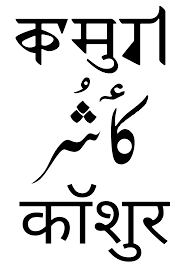Language/Kashmiri/Grammar/Questions
Hi Kashmiri learners! 😊
In today's lesson, we will be discussing how to ask questions in the Kashmiri language. Asking questions is an important part of any language, and it is essential to understand the rules of grammar in order to do so correctly. We will look at the different types of questions, as well as the various ways to form them. By the end of this lesson, you should have a good understanding of how to ask questions in Kashmiri.
Types of Questions
In Kashmiri, there are two main types of questions: yes/no questions and wh-questions.
Yes/No Questions
Yes/no questions are used to ask for a simple yes or no answer. They are formed by using the auxiliary verb 'hay' (हे) at the beginning of the sentence. For example:
- Hay tu kyaa? (हे तू क्या?) - Do you know?
- Hay tu kahaa? (हे तू कहा?) - Where are you?
Wh-Questions
Wh-questions are used to ask for more detailed information. They are formed by using the interrogative pronouns 'kyaa' (क्या), 'kahaa' (कहा), 'kaisee' (कैसी), 'kab' (कब) and 'kyon' (क्यों) at the beginning of the sentence. For example:
- Kyaa tu jaantaa hai? (क्या तू जानता है?) - Do you know?
- Kahaa tu jaanaa chaahataa hai? (कहा तू जाना चाहता है?) - Where do you want to go?
- Kaisee hai tu? (कैसी है तू?) - How are you?
- Kab tu aanaa chaahataa hai? (कब तू आना चाहता है?) - When do you want to come?
- Kyon tu jaanaa chaahataa hai? (क्यों तू जाना चाहता है?) - Why do you want to go?
Other Ways to Ask Questions
In addition to the two main types of questions, there are other ways to ask questions in Kashmiri.
Tag Questions
Tag questions are used to confirm something that has been said. They are formed by adding the auxiliary verb 'hay' (हे) at the end of the sentence. For example:
- Tu jaantaa hai, hay? (तू जानता है, हे?) - You know, right?
- Tu aanaa chaahataa hai, hay? (तू आना चाहता है, हे?) - You want to come, don't you?
Rising Intonation
Rising intonation is used to make a statement sound like a question. It is formed by raising the pitch of your voice at the end of the sentence. For example:
- Tu jaantaa hai? (तू जानता है?) - Do you know?
- Tu aanaa chaahataa hai? (तू आना चाहता है?) - Do you want to come?
If you have any questions, please ask them in the comments section below.
Feel free to edit this wiki page if you think it can be improved. 😎

